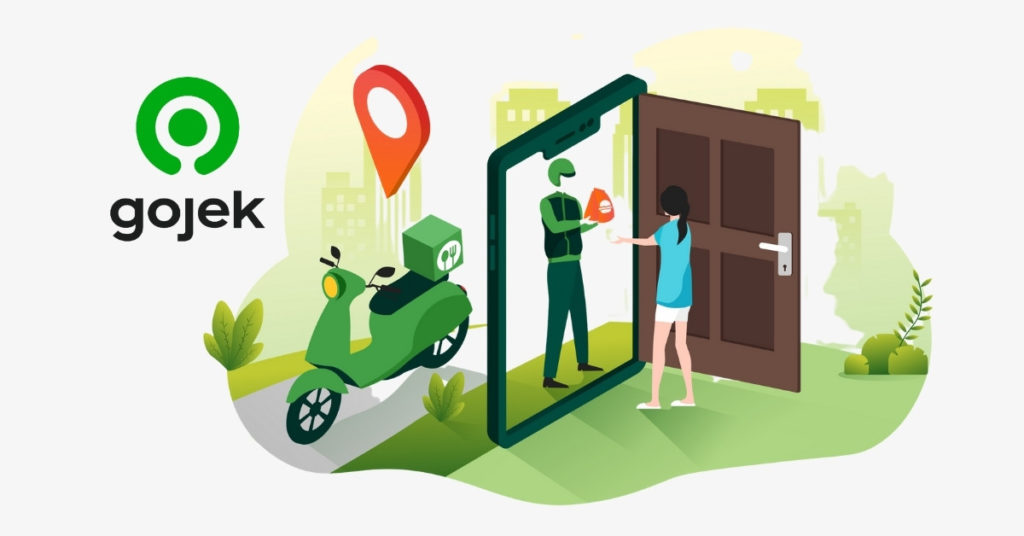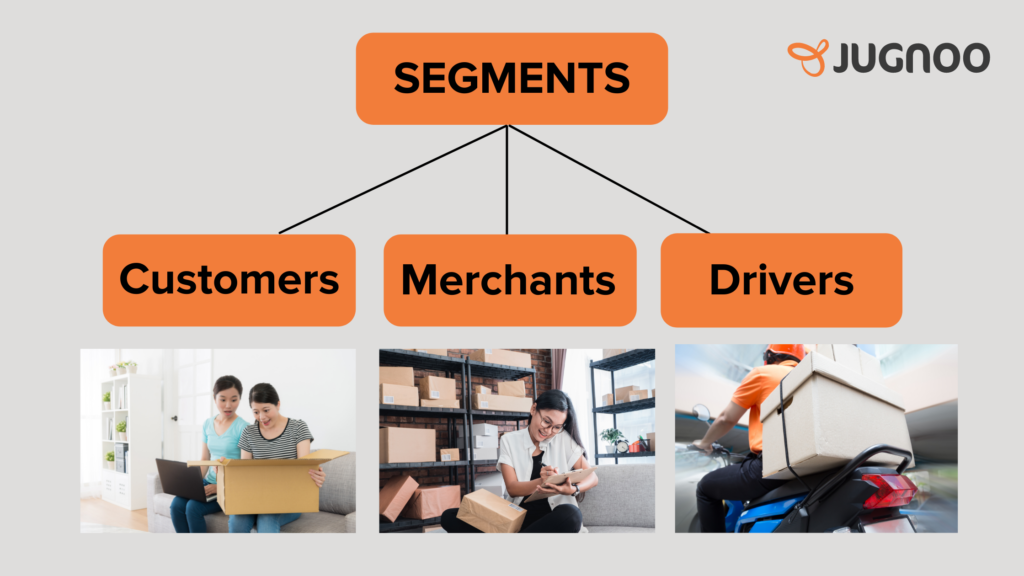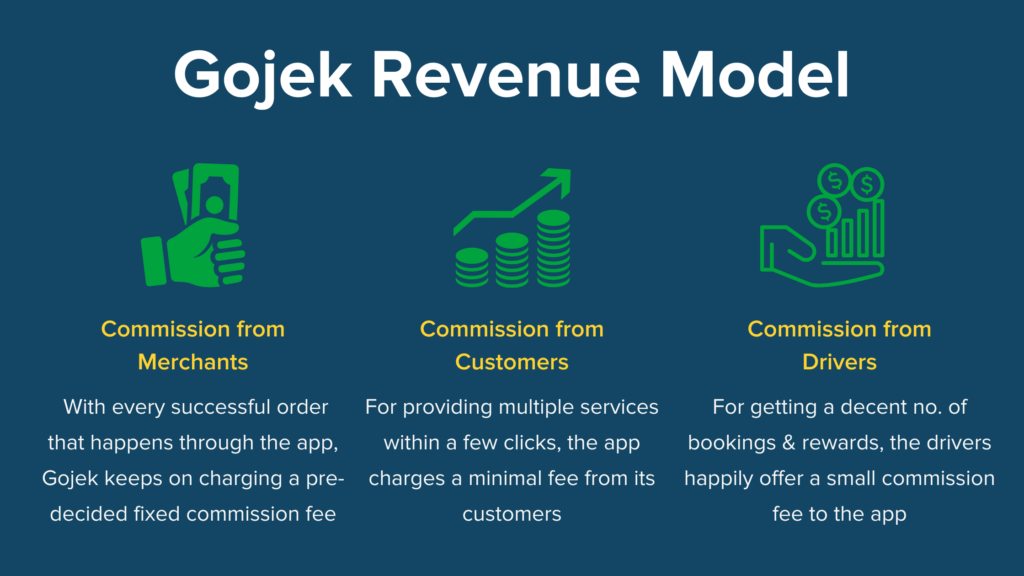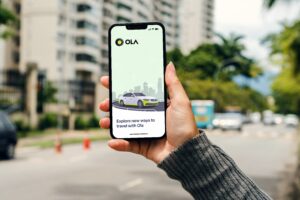How does Gojek Model Works: Business and Revenue Insights!
A Super App born out of necessity has become the “business trend” today. A few years back, the launch of malls had kicked out the existence of shops and stores. Similar to this pattern, the presence of super apps is giving tough competition to the single-service app. And Gojek is definitely the talk of the town in the super-app industry. Let’s decode the Gojek Business Model.

Gojek: A brief overview
Indonesia- based App is a one-stop destination for ordering food, shopping, hyper-local delivery, commuting from one place to another, getting a massage, digital payments, and many more. In simpler words, the super App is a single app that supports many services to ease down a customer’s buying journey.
The App has proven its existence in Southeast Asia and is ready to expand its operations over the globe in the coming time.
Gojek Business Model: Insights
The multi-service platform caters to different segments that are collaborated operationally to fetch the desired level of services. Three main segments of Gojek Business:

Segment 1: Customers
The end-users of the app are the first and foremost segment of the app. The app is responsible for offering reliable and required services to its users. Gojek helps in :
- Offering multiple needs through a single app
- Listed a wide range of reliable retailers and service providers
- Secure and safe transactions
Segment 2: Merchants
Gojek keeps on onboarding the different merchants as per the market requirement. Gojek is open to all the merchants who can serve their segment 1 (customers) in a fulfilling way. Gojek helps in:
- Offering a vast online presence to the merchants
- Expand customer base to the on-boarded merchants
- Good range of profit with every successful service offered
Segment 3: Drivers
Drivers are an important part of the Gojek ecosystem. The on-boarded drivers can avail a good amount of profit with the super app. Here is how Gojek helps:
- Easy to sign-up process
- Flexible work timeline
- Better work options
These three segments together play an integral part in making a strong ecosystem for the super app. It helps in building the required substantial existence and demand in the market.
The Growth Timeline: How Gojek has evolved in the past?
It has been a roller coaster ride for Gojek. The start-up came up with a market-fit idea and has executed it in a better way. Although, the super app has its own ups and downs. Let us dive deep into the steps that made Gojek – the ultimate unicorn in its area.
Inception Stage:
- The foundation was laid in October 2010. It started with a call center and 20 odd motorcycle riders.
- In May 2014, Gojek got its first level of investors, amid Uber’s rising popularity.
- By January 2015, app has grown with 400+ riders in Jakarta and nearby cities
- By March 2015, the count went up to 2000+ riders and the operation area was expanded to Bali (300 riders) and Surabaya.
- By April 2015, the app started serving with the go-food services till Bandung.
Funding and Acquisition
- Gojek gets funding from Sequoia Capital and some other investors in October, 2015
- By February 2016, the App acquired two Indian startups- Codeignition and C42 Startups.
- In May 2016, Gojek collaborated with a major Indonesian taxi company- BlueBird.
Latest Advancements:
By 2020, Gojek has processed more than $10 billion annualized gross transaction value and is currently operating in Singapore, Vietnam, and Thailand.
Gojek Revenue Model: The art of Generating ROI
Gojek has emerged as a high-rewarding business model with a pretty impressive turnover every year. Let’s unwrap the revenue sources for the super app which will also give you an insight into why super apps are trending!

Commission from businesses (merchants)
As we discussed earlier also, the super app keeps on onboarding the new merchants with its expansion. It has been documented that Gojek works on a commission model with these merchants. With every successful order that happens through the app, Gojek keeps on charging a pre-decided fixed commission fee.
Commission from customers (end-users)
The Gojek business ecosystem revolves around its end-users. The one-stop shop is a go-to app that helps the customers to avail the required services with a few clicks. However, for this whole process, the app charges a minimal fee from its customers.
Commission from Drivers
The drivers associated with the Gojek app get a decent number of bookings. Keeping in mind the perks of staying connected with a high-rewarding platform, the drivers happily offer a small commission fee to the app.
Hence, all these three revenue channels are the main source of generating the app revenue.
Wrapping up
The success of Gojek has given new wings to other similar business models. However, there are certain levels of challenges and struggles that were and might be a part of the app’s journey.
But, the businesses that sail through the tough times create history! We already have Grab, Gojek on the list. If you wish to know in-depth about the app’s operational and value proposition, feel free to get in touch with our super app experts. Create a super app with Jugnoo and become the superhero in the industry.
Get Your Gojek Like App Today with Jugnoo!
Are you also excited to start your own super app marketplace? If the idea of getting one app that can replace multiple apps elevates you, then today is the right time to Get in Touch with Jugnoo.




